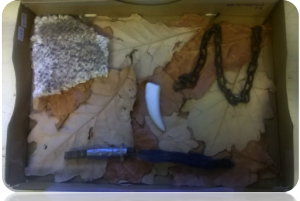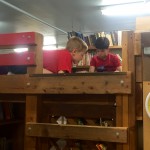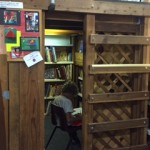“Happiness lies in the joy of achievement and the thrill of the creative effort.”
~Franklin D. Roosevelt
In our 4th/5th grade literature class we have been getting into the rhythm of doing homework weekly. In my last post I explained the various clubs that we started in order to tailor the homework to our students interests and strengths. There is no surprise that our Creative Club keeps gaining momentum, and more students are joining weekly, as children are naturally creative spirits!
Our creative homework began with a series of small tasks that have been building over the weeks, starting with having the students fill out questionnaires to get them thinking about the trajectory of doing creative projects for literature homework. Next, they were asked to pick a book and write a proposal about an art piece they would create that depicted elements of their chosen book. The next week they were to create the proposed piece. Some did drawings, others dioramas. Both the proposals and the work itself brimmed with joy and showed interest on the part of our students. The next assignment entailed using the same book for inspiration and writing a creative story. While I eagerly await their stories to be turned in, I have designed their next assignment, which entails creating a summary both in writing and through visual representation.
Diorama of White Fang by Jack London
Having our students work with the same book for these assignments will help them further refine their thinking, and their representation of their metacognition, through both their writing and their art. Since we started with small tasks we can now easily scaffold our projects and introduce more complex assignments as we go. In addition, starting with creative assignments often makes homework more palatable for our students, and hopefully decreases the anxiety that homework often produces as a side effect. As we get ready for our first substantial book report, we will repeat our first steps (Brainstorm / Proposal / Produce / Creative Writing / Visual & Written Summary ) so our students will have a creative and manageable way to begin such an endeavor, that includes small tasks that weave between written work and hands on creative work.
“Creativity is just connecting things. When you ask creative people how they did something, they feel a little guilty because they didn’t really do it, they just saw something. It seemed obvious to them after a while. That’s because they were able to connect experiences they’ve had and synthesize new things.”
~Steve Jobs
The desired effect is to feed the creative spirit, nourish and build academic skills, and provide a meaningful learning experience. Making learning meaningful and enjoyable is always my goal as a teacher and combining mediums in the classroom is one way I have found to achieve this. Our students creativity is now spreading out and becoming a visible element in our literature classroom, as the students drawings from read aloud dawn our walls, and they create large visual panels to represent our genre studies. I look forward to continuing to watch our students reading, comprehension, and creativity, blossom and bloom through their creative endeavors and their diligence.
Fantasy Panel ~ In Process
“It is the supreme art of the teacher to awaken joy in creative expression and knowledge.”
~Albert Einstein






